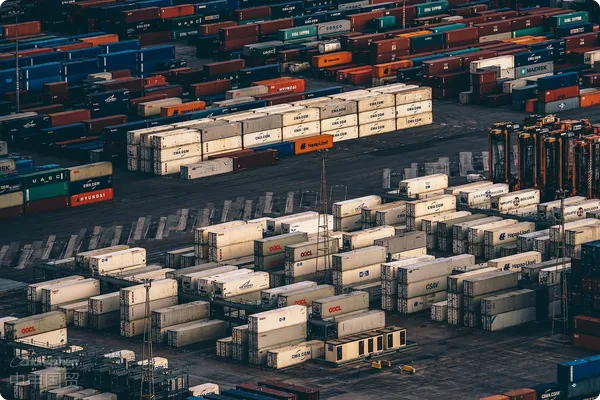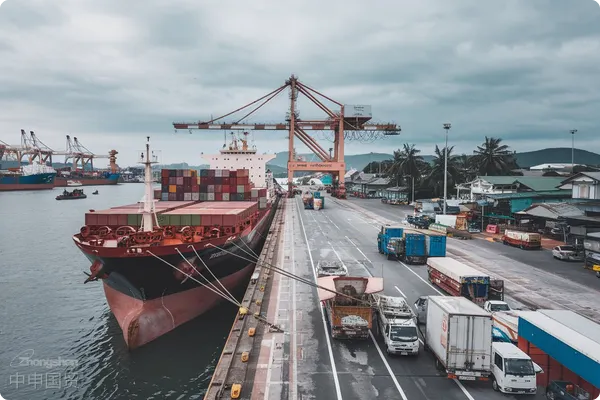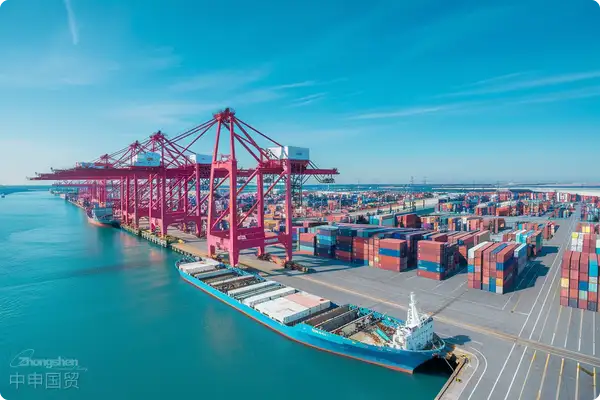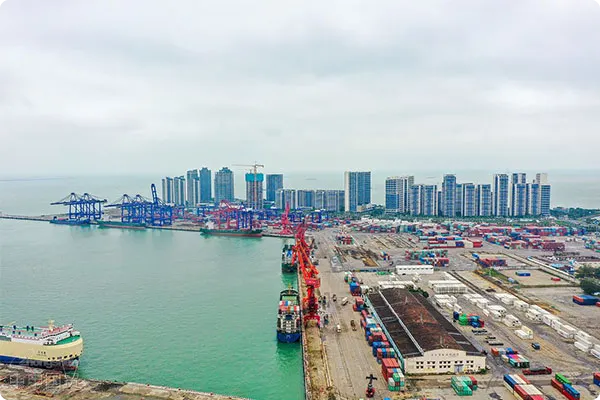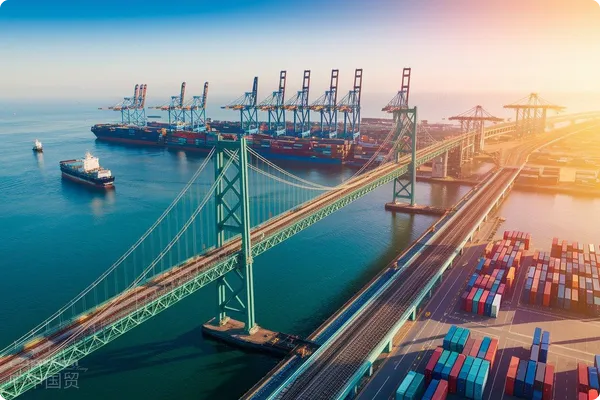- Shanghai Zhongshen International Trade Co., Ltd. - Two decades of trade agency expertise.
- Service Hotline: 139 1787 2118
If you are considering exporting goods to Canada or have been engaged in China - Canada trade for many years, then understanding these experiences and suggestions regarding imports to Canada will be of great benefit to you. The trade process for exporting to Canada involves many aspects, including tariff payment, customs inspection, anti - dumping duties, and food import control. Today, we will delve into every practical aspect of exporting to Canada, providing you with detailed strategies and operation guidelines to help you better understand each step and ensure that your business is more efficient and smooth.foreign tradeThe truth about tax - inclusive and door - to - door delivery
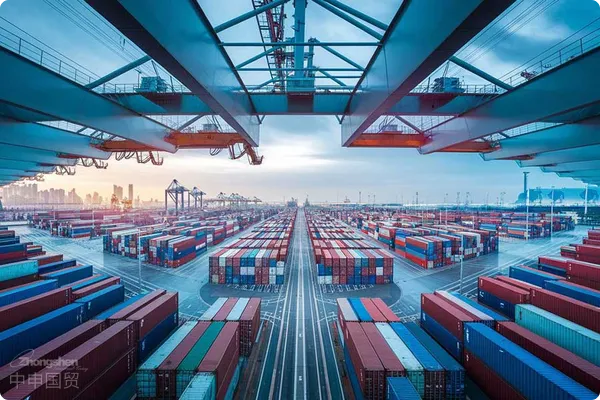
2024年CARM系統(tǒng)的變更
The CARM system provides importers with an online platform that allows them to check the status of tariff payments at any time, manage the payment process, and communicate directly with the customs. This transparent management method can reduce the risk of information asymmetry and potential financial disputes. In addition, the CARM system has the function of automatically calculating tariffs, enabling importers to estimate possible costs in advance, better plan cash flow, and ensure the rational allocation of funds.
Registration Process of the Canada Customs CARM System:
加拿大海關(guān)CARM系統(tǒng)注冊(cè)流程:https://www.cbsa-asfc.gc.ca/services/carm-gcra/import-export-importation-exportation-eng.html
Therefore, it is recommended that all enterprises planning to conduct import business in Canada familiarize themselves with and register for the CARM system as soon as possible, in order to adapt to the new compliance requirements and reduce potential operational delays caused by system changes. This is not only an avoidance of future trade risks, but also an effective improvement of their own trade efficiency. By mastering the functions of the CARM system, enterprises can more actively manage the entire import process and improve the efficiency and accuracy of overall operations.
CBSA Customs Inspection: An Inevitable Challenge
Many people have heard of the tax - inclusive and door - to - door delivery service, which seems to simplify the entire customs clearance process, eliminating concerns about cumbersome tariff handling and additional costs. But in fact, no company can truly achieve tax - inclusive. The so - called tax - inclusive service only helps you complete the customs clearance process in the name of another company, thus avoiding charging tariffs directly from the importer. This method does not actually relieve your tax liability, but rather accomplishes the process through an alternative operation. This means that when goods enter Canada, tariffs still have to be paid. The so - called tax - inclusive is just achieved through the name of another company.
In addition, using the tax - inclusive service may pose certain hidden risks in terms of tax and legal compliance. For example, if there are problems in the customs clearance process under the name of another company, the importer will face potential tax and legal risks. In Canada, the tax department is very strict in reviewing tariff payments. Once any tax - evasion behavior is discovered, high fines may be imposed, and it may even affect future trade licenses. Therefore, when choosing this kind of tax - inclusive and door - to - door delivery service, special caution is required to ensure that the method used is completely legal and compliant.
For enterprises, the best way is always to deal directly with the Canadian customs and declare and pay tariffs through regular channels. This not only ensures the long - term stability of the business, but also avoids additional costs and risks caused by opaque operations during the customs clearance process. Although this method may seem slightly more complicated in the short term, in the long run, compliant and transparent operations will help enhance the enterprises reputation and competitiveness in the market. Therefore, when choosing whether to use the so - called tax - inclusive service, enterprises need to comprehensively evaluate its legality and potential risks and make decisions that are most conducive to long - term development.
Sensitive Goods and Special Goods: All by Luck?
Regarding Canadian customs inspections, no company or freight forwarder can avoid this process. Even if there are so - called connections, it cannot ensure exemption from inspection. The CBSAs inspections are divided into two main types, and each inspection method has its specific impacts and cost structures.
- Dock ExamThis inspection method is to scan the goods through an X - ray machine at the port. If no abnormalities are found during the scanning process, the goods can be released smoothly. The inspection cost of Dock Exam is approximately CAD 1000, which is relatively low, and the inspection speed is relatively fast, generally not causing too much delay. However, even so, the Dock Exam inspection will still affect the overall circulation speed of the goods to a certain extent, so enterprises need to make preparations in advance.
- OFF Dock ExamThe other inspection is OFF Dock Exam, that is, the goods are pulled to the customs yard for a more in - depth unpacking inspection. Compared with Dock Exam, this inspection takes more time, usually 2 - 3 weeks to complete, and the cost is approximately CAD 3000. In addition, additional container demurrage fees of the shipping company may be incurred, and these fees vary depending on the length of the detention time. The OFF Dock Exam inspection is a relatively large challenge for enterprises. Not only is it more expensive in terms of cost, but the uncertainty in time may also affect the stability of the supply chain.
In order to minimize the adverse impacts of these inspections, when preparing goods for export to Canada, enterprises should try their best to provide accurate and compliant documents to ensure the integrity and consistency of all information. This includes detailed product descriptions, clear invoices and packing lists, as well as all necessary certification documents. Accurate document preparation can reduce the probability of being randomly inspected to a certain extent, and also reduce potential delays during the inspection process.
In addition, enterprises should also consider cooperating with professional customs brokers to ensure the smooth progress of the customs clearance process. Professional customs brokers are usually very familiar with the CBSAs inspection procedures and requirements and can help enterprises avoid unnecessary inspection risks as much as possible. If the goods are still required to be inspected in the end, the customs broker can also assist the enterprise in responding quickly to ensure that the inspection process goes as smoothly as possible, thus reducing losses in terms of time and cost.
Enterprises can also cooperate with experienced logistics partners to reduce inspection risks. Experienced logistics companies usually have a better understanding of Canadian customs regulations and can provide specific suggestions to enterprises regarding goods packaging, document preparation, etc., thereby improving the efficiency of customs clearance. At the same time, ensuring that the packaging of goods meets the CBSA standards is also an effective way to avoid inspection. Compliant packaging can not only reduce the risk of being suspected, but also effectively reduce the damage rate during transportation, which is crucial for successfully passing the customs inspection.
Anti - Dumping Duties: The Existence of the Whitelist
For so - called sensitive goods or special goods, there is actually no special channel to ensure non - inspection. Many times, customs clearance is completely a matter of luck, especially when it comes to high - risk or sensitive categories of goods, the customs inspection frequency will be relatively higher. Some ways of fudging on documents not only carry the risk of being inspected, but may also face serious penalties and fines. Especially in Canada, the CBSA has strict requirements for the compliance of imported goods, and any non - compliant behavior will be treated seriously.
Sensitive goods usually include products involving specific safety, environmental or health risks, such as certain chemicals, electronic devices or some controlled foods. For these goods, the customs sometimes takes additional inspection measures to ensure that the import complies with all regulations. For these sensitive goods, the customs clearance process not only depends on luck, but also requires detailed preparatory work, including ensuring the accuracy of all documents, the compliance of the goods, as well as appropriate packaging and labeling.
In addition, enterprises must be vigilant about rumors claiming to have special channels to avoid inspections. In international trade, legality and compliance are always the most important factors. Any attempt to reduce the probability of inspection through improper means may lead to serious legal consequences and even affect the companys future import qualifications. Therefore, the safest way is always to conduct trade operations legally and compliantly. Ensure that documents are true and complete, and comply with all relevant regulations, so as to maximize the smooth customs clearance of goods and establish long - term and stable trade partnerships.
Anti - Dumping Duties on Steel Coil Products
In Canada, anti - dumping duties do exist and involve many products exported from China. For example, products such as aluminum products, carbon steel welded pipes, reinforced concrete, copper pipes, steel plates, mattresses, and metallic silicon are subject to anti - dumping duty restrictions. These tax rates are designed to offset unfair pricing behavior and prevent foreign enterprises from dumping products at prices lower than the normal market price, thus causing damage to the Canadian domestic industry. Therefore, anti - dumping duties are an important measure to protect the interests of Canadian local producers.
However, what many people dont know is that even if there are anti - dumping duties, there are whitelisted enterprises for each category. If you import goods from these Chinese enterprises on the whitelist to Canada, or affiliate with these whitelisted enterprises, you can avoid anti - dumping duties. These whitelisted enterprises are those that have been reviewed and recognized by the relevant Canadian departments as meeting the fair trade conditions. They can export goods at legal prices without being affected by additional anti - dumping duties.
Therefore, it is of utmost importance for importers to know which enterprises are on the white list. This can not only help enterprises reduce costs, but also effectively avoid the economic pressure brought about by anti - dumping duties. Importers should actively communicate with suppliers to confirm whether they are on the white list, or consider establishing cooperative relationships with these compliant enterprises to ensure the economic efficiency and legality of imports.
In addition, it is also very important to regularly pay attention to the latest white - list information released by the Canada Border Services Agency (CBSA). Since the white list may be updated at any time, obtaining the latest list in a timely manner can ensure that importers import plans are not affected. Enterprises can also obtain the latest information on anti - dumping duties and the white list through professional trade lawyers or consulting agencies to make more accurate business decisions.
Address for exemption information released by the Canada Border Services Agency (CBSA):Anti-dumping and countervailing (cbsa-asfc.gc.ca)
Starting from October 21, 2024, the Canada Border Services Agency (CBSA) requires all importers to register with the CARM system for declaration. The implementation of the CARM system makes the tariff payment process between customs brokers and importers more transparent, enabling importers to directly manage all customs - related activities. This not only improves the transparency of tariff payment but also makes the entire customs declaration process more controllable and efficient.
Regarding steel coil products, especiallyCold - Rolled Steel (CRS)Since the end of 2018, Canada has imposed anti - dumping duties on cold - rolled steel coils imported from China, South Korea and Vietnam. The specific anti - dumping duty rates are:
- China: 91.90%
- South Korea: 53%
- Vietnam: 99.20%
The implementation of these duty rates is to offset unfair pricing practices and protect the domestic steel industry in Canada. Therefore, if you plan to export steel coil products to Canada, it is recommended to verify the latest policies in advance, and try to import from enterprises on the white list, or consider other compliant solutions.
Summary
Exporting to Canada may seem challenging, but as long as enterprises can accurately grasp various policy requirements, be familiar with system operations, and make sufficient compliance preparations, they can minimize potential risks. It is hoped that this article can provide you with some practical experience and strategies to help your export business expand into the Canadian market more smoothly and efficiently. If you need to know more details or personalized solutions about exporting to Canada, you are welcome toZhongShen International Tradecontact us. We will wholeheartedly provide you with professional support and services!
Related Recommendations
Knowledge Base
Contact Us
Email: service@sh-zhongshen.com
Related Recommendations
Contact via WeChat

? 2025. All Rights Reserved. 滬ICP備2023007705號(hào)-2  PSB Record: Shanghai No.31011502009912
PSB Record: Shanghai No.31011502009912
